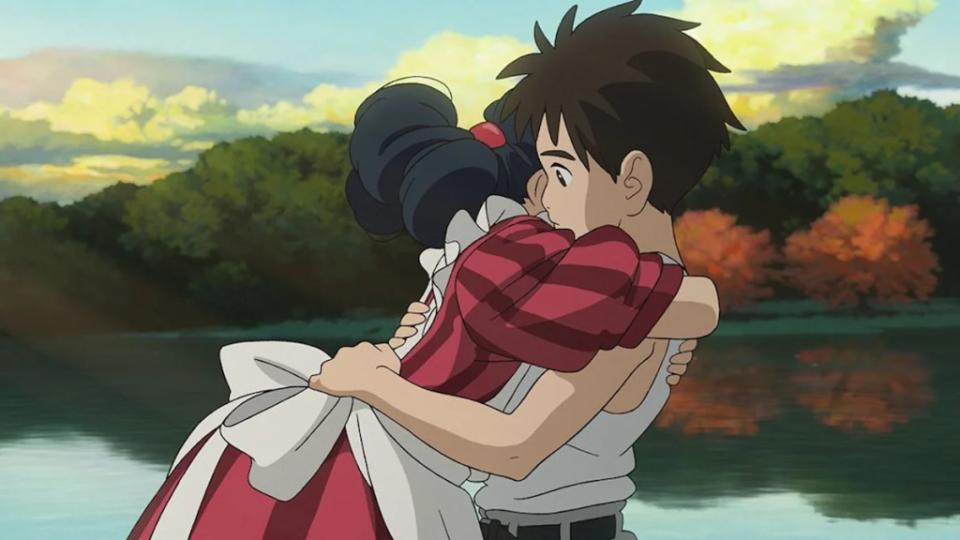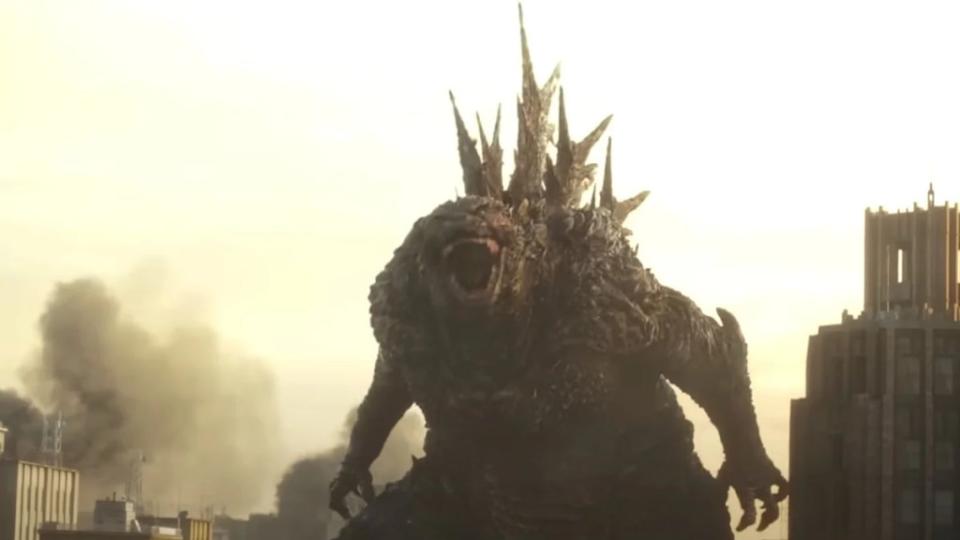Inside Japan’s Historic First at U.S. Box Office – With 2 Movies in Top 3
- Oops!Something went wrong.Please try again later.
- Oops!Something went wrong.Please try again later.
Early December is usually a time when Hollywood studios hold off on releasing big films in theaters. This year, that traditional strategy paved the way for Hayao Miyazaki’s “The Boy and the Heron” and Takashi Yamazaki’s “Godzilla Minus One” to make box office history for Japan.
For the first time ever, two Japanese movies cracked the top 3 of the U.S. box office. “The Boy and the Heron,” produced by Studio Ghibli, earned an opening weekend of $12.3 million, marking the first time that an original anime film has taken the No. 1 spot and setting a company record for U.S. indie animation distributor GKIDS.
“Heron” and “Minus One” were able to pull off the record-breaking weekend to a mix of name recognition, strong critical and audience acclaim, and smart timing by U.S. distributors GKIDS and Emick Media. The success of both films shows how Studio Ghibli and Godzilla, two of Japan’s most well-known cinematic exports, have gained a bigger foothold than ever in the United States and are helping stem the tide for theaters when major Hollywood titles like Walt Disney’s “Wish” falter.
“This is one of the most interesting box office weekends we have ever had,” said Comscore analyst Paul Dergarabedian. “It was a very un-Hollywood type of weekend where two films from Japanese cinema captured all the attention.” Dergarabedian added that the Japanese box office-takeover could signal a new period in cinema similar to the 1970s — when audience tastes shifted to darker films like “The Godfather” and “The Exorcist” — where “some moviegoers show a greater willingness to try something different at theaters.”
While Miyazaki, a co-founder of Studio Ghibli, built his name among American anime fans during the 2000s, his highest-grossing film in the U.S. is “Arriety,” a film he wrote but did not direct that grossed $19.1 million in 2012. “The Boy and the Heron” is set to blow that out of the water, having grossed a strong $1 million on Monday in a sign of strong word-of-mouth among arthouse moviegoers.
Meanwhile, “Godzilla Minus One” earned a strong $8 million in its second weekend to claim the No. 3 spot on the charts. Produced by Tokyo-based Toho, the post-WWII kaiju movie has become a cult hit in the U.S. and has grossed $26.4 million through two weekends in theaters — after earning $23 million in Japan.

For animation buffs, “The Boy and the Heron” was a title that had been on their radar for a long time, as it has been marketed as the final film in Hayao Miyazaki’s legendary career. For anime fans, a new Miyazaki film is a true cinematic event much like a new Christopher Nolan film is for audiences around the world.
While the recent rise of anime films in the specialty market has been driven by franchises like “Demon Slayer” and “Dragonball Super,” Miyazaki has built up a name recognition as ubiquitous among western anime fans as any top anime series.
Meanwhile, GKIDS has built up a reputation of its own among Miyazaki’s fans through its annual “Ghibli Fest,” which presents the filmmaker’s work in theaters each spring and has built a marketing base that could easily be used to raise awareness of the U.S. release of “The Boy and the Heron” among the core audience.
“Godzilla Minus One” is also enjoying the fruit of years of work. Toho’s strategy of developing its own “Godzilla” movies in Japan while making a deal with Legendary Pictures to allow the Burbank-based studio to produce separate films for western audiences has preserved the franchise’s image both in its home country and abroad.
Since “Godzilla” has historically had a minimal box office footprint outside of Japan, “Godzilla Minus One” was produced on a thrifty budget of below $15 million in order to ensure that it could turn a profit from Japanese revenue alone. The last Toho installment, “Shin-Godzilla,” turned a profit by grossing a robust $75.3 million in Japan in 2016 but only grossed $1.9 million in the U.S.
In the years since, Legendary and Warner Bros. have made Godzilla into the center of their MonsterVerse with films like “Godzilla: King of the Monsters” and “Godzilla vs. Kong,” the latter of which was a key film for theaters during the pandemic rebuilding process and helped keep the franchise in the minds of casual moviegoers.

When “Godzilla Minus One” invaded 2,300 U.S. theaters on Dec. 1, the radioactive dinosaur was much fresher in the minds of Americans who have seen few or none of the 29 Toho-produced “Godzilla” films, which date back to the original 1954 release. There was also little competition from U.S. films outside of the third weekend of a “Hunger Games” prequel (“Hunger Games: The Ballad of Songbirds and Snakes”) and the opening of Beyonce’s “Renaissance” concert film.
Hollywood studios historically avoid releasing major films in early December, as they consider it more advantageous to release them closer to Christmas to take advantage of holiday playtime. That leaves the floor open for specialty titles to fill in the gaps and build buzz to attract moviegoers looking for something fresh.
The lack of mainstream competition spilled over into the second weekend of December, with Warner Bros. holding off on releasing its family film “Wonka” until Dec. 15. That allowed both “The Boy and the Heron” and “Godzilla Minus One” to maintain their screen counts, with “Heron” releasing in 2,200 locations while “Minus One” increased its count to just over 2,500 locations in its second weekend.
With a handful of prominent exceptions — such as “Sound of Freedom,” “Everything Everywhere All at Once” and “Asteroid City” — the independent and specialty markets are still in a diminished state compared to pre-COVID times. But a strong release strategy has allowed “The Boy and the Heron” and “Godzilla Minus One” to find greater American box office success than any past Toho or Studio Ghibli title.
“‘Godzilla Minus One’” really performed like a 2010s arthouse film, where the word-of-mouth entirely drove the film, and the momentum got even stronger once the critics caught on as well,” said Dergarabedian. “These movies aren’t going to carry movie theaters with these grosses, but they do send a message about what can work in theaters, which the film industry really needs to rethink.”
The post Inside Japan’s Historic First at U.S. Box Office – With 2 Movies in Top 3 appeared first on TheWrap.

